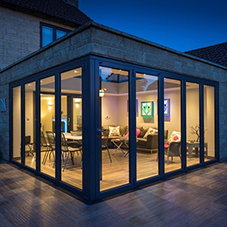When implementing a security system is it important to remember the basics and that’s locks! Electric locking systems are everywhere in the security and access system market so how do you even begin to choose the right one for your premises?
Here is a handy list of the things you need to consider when specifying an electric locking system:
Door type
Door material and door type must be considered when specifying any locking system.
For example, electric strikes can only be used on single action doors. Swinging doors require locking solutions like solenoid bolts, magnetic shear locks or double action electric latches.
uPVC doors are narrow and often contain steel re-enforcement, something to consider when selecting a locking system. If the door contains a multiple point lock it might be impossible to fit an electric strike.
Centre-hung aluminium doors require lead in or extension lips to allow latch-free entry without the frame obstructing the lock. An ill-fitting locking system may leave a gap between the door and the frame. The maximum size a gap should be is 3mm.
Fire regulations
Naturally, it is important to take in to account local and national fire safety regulations when specifying any access system.
A building should be hard to break in to but easy to get out of in the case on an emergency and all exit doors should be able to open with one action, never multiple.
Type of electric release
The most popular type of electric locks are electric strike, electrically-released lever trim or electric lock body.
Trim and lock body solutions are door mounted and can be operated simply by a power supply and, for example, an internal button or intercom system. They can also come as a part of an automatic release system.
Electric strikes can also be used with remote systems but do not tend to have their own systems.
Lock function
How the locking system works for you is obviously an important consideration. Most electric locking systems work on the premise that the door is always locked and are only opened when a button is pressed, code entered or the key card system is activated. Whenever power is cut the lever is locked on the exterior.
With these systems the door will always ben manually activated from the inside.
Smart security systems for example may enable you to set times of the day where free access is granted (ideal for education and healthcare environments). Considering the function of the premises is crucial in determining a locking system.
Power supply
It is essential to determine what kind of power supply you may need to operate an electric locking system.
DC current for example is a continuous and silent supply whereas AC is noisy and has a higher consumption level. AC power supply is best used for doors subject to some type of pressure.
Multivoltage power supply is the optimal choice as it incorporates elements of both DC and AC power supply and is ideal for high performance consumption.
The type of power supply depends on the function of the locking system. Regular function allows door opening while the release is powered and can be implemented with both an alternating and continuous current.
Automatic function needs a short electric pulse and the door is automatically locked again once closed. This is possible with both DC and AC.
Inverted function is required to close the door and is only possible with a continuous power supply. Allows door opening when the power is off.
Like this? Check out our Security and Access Systems hub.





